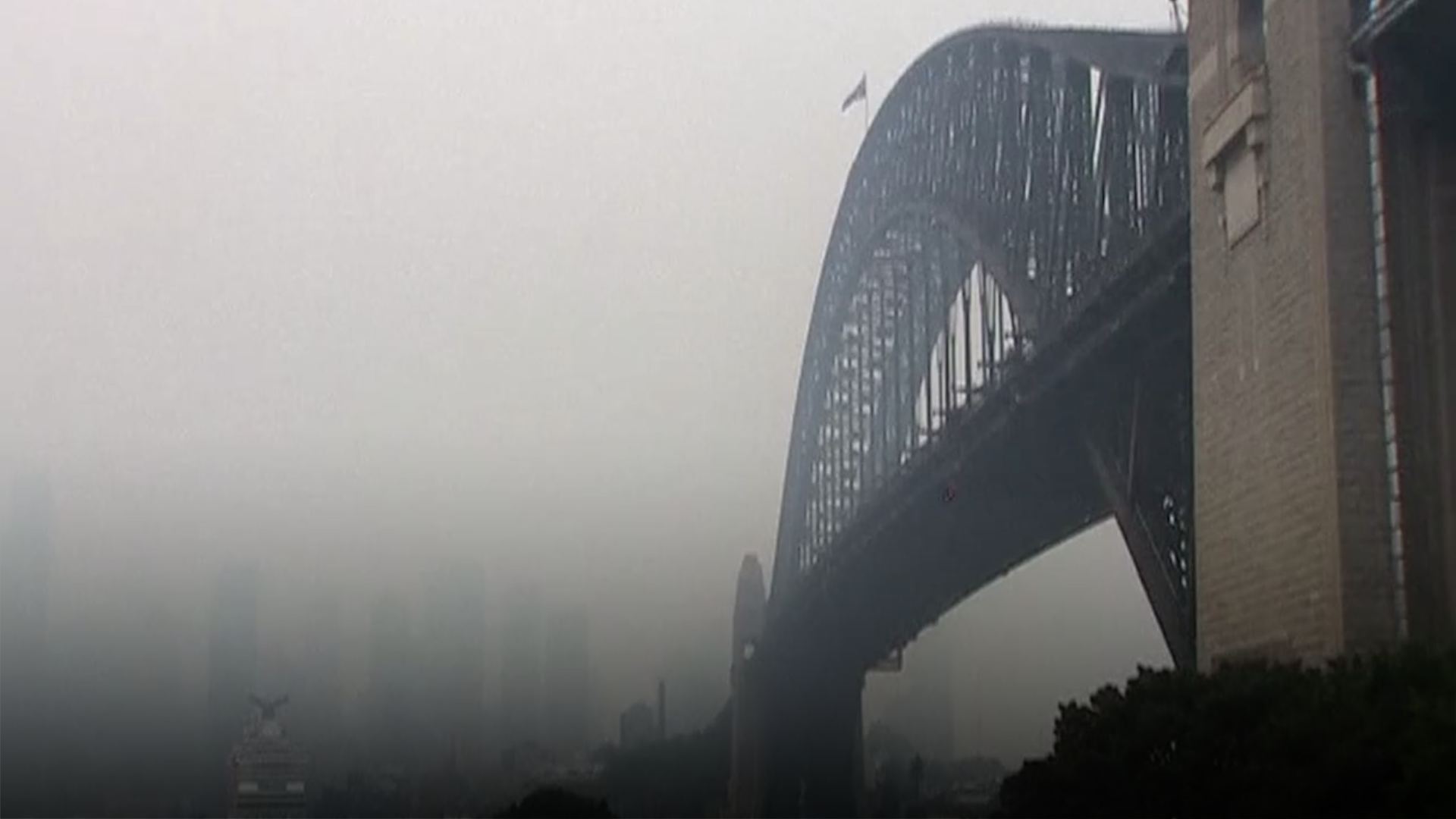01:00

Toxic haze blanketed Sydney Tuesday triggering a chorus of smoke alarms across the city and forcing school children inside, as "severe" weather conditions fueled deadly bush blazes along Australia's eastern coast.
Fire engines raced office-to-office in the city center with sirens blaring, as inland bushfires poured smoke laden with toxic particles into commercial buildings.
Emergency services responded to an "unprecedented" 500 automatic call-outs inside a few hours according to New South Wales Fire and Rescue's Roger Mentha.
A regional fire headquarters miles from the nearest blazes was itself evacuated while throngs of mask-wearing commuters choked their way through thick acrid air and the organizers of a harbor yacht race declared it was unsafe to proceed.
"The smoke from all the fires is just so severe here on the harbor that you just can't see anything, so it's just too dangerous," said spokeswoman Di Pearson of an event that normally foreshadows the famed Sydney-Hobart yacht race. "The vision is just so poor."
Some of the city's commuter ferries were also cancelled "due to thick smoke" and school kids were kept inside at break time and sent home early as pollution levels soared far above "hazardous" levels.
For weeks the east of the country has been smothered in smoke as drought and climate-fueled bushfires have burned. But the scale of the problem on Tuesday shocked even hardened residents.
Bruce Baker – an 82-year-old who lives in Gosford, north of Sydney – said he was skipping his daily morning walk because of the smoke.
"This is the worst it's been, for sure," he told AFP. "It dries your throat. Even if you're not asthmatic, you feel it."
"People throughout coastal (New South Wales) are experiencing smoke haze this morning," the rural fire service said.
"Westerly winds have pushed smoke toward the coast. Smoke has settled over the city of Sydney. It will continue to linger until temperatures rise later in the day."

To the northwest of Sydney, several fires already burning for weeks have combined to create a "megafire" that has already destroyed 319,000 hectares (788,000 acres) of land, mostly inside national parks.
The crisis has been propelled by a prolonged drought that has made vegetation tinder dry.
The Bureau of Meteorology has reported that Australia experienced its driest November on record this year.
The "big dry" has left farmers desperate and small towns facing the prospect of running out of water completely.
A swathe of the east of the country has seen "rainfall deficiencies" since early 2017 – almost three years.
Many dams in New South Wales are empty and almost all are well below capacity.
Firefighters south of Brisbane recently reported 1,000 liters of water were stolen from tanks at their station.
Amid the shortage, Tuesday also saw the toughest water restrictions in a decade being introduced for Sydney – with curbs on everything from hosepipe use to washing cars.

Fires expected to spread in 'severe' conditions
The deadly bushfires are expected to spread and intensify, as strong winds and high temperatures created "severe" fire conditions.
By early Tuesday, there were already nearly 100 bushfire incidents in the state of New South Wales alone and dozens more in Queensland.
The New South Wales rural fire service said they expected "severe conditions where embers can be blown ahead of the fire into suburbs and threaten properties."
Total fire bans were put in place across much of the east of the country and in large parts of western Australia.
Temperatures in some inland areas are expected to ease past 40 degrees Celsius.
"People throughout coastal (New South Wales) are experiencing smoke haze this morning," the rural fire service said.
"Westerly winds have pushed smoke toward the coast. Smoke has settled over the city of Sydney. It will continue to linger until temperatures rise later in the day."
(Cover photo is a still from the video, edited by An Qi)
(If you want to contribute and have specific expertise, please contact us at nature@cgtn.com.)
Source(s): AFP